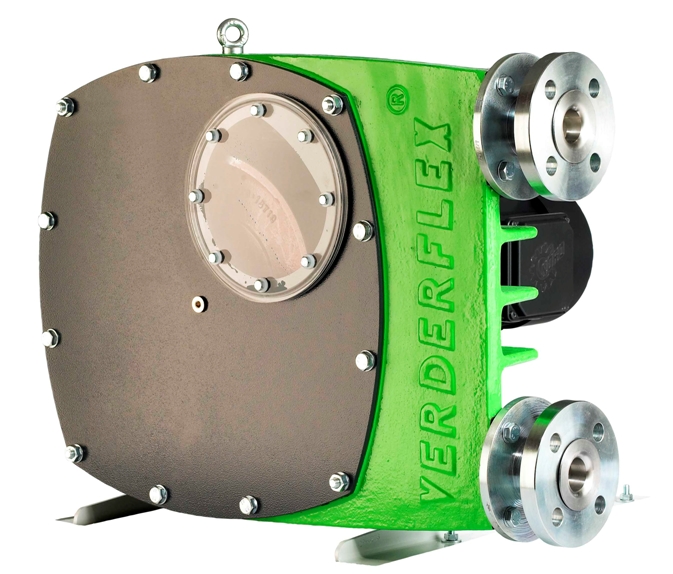Dosing Yeast For Wine Fermentation With A Verderflex Pump
In the process of wine making, yeast is used to convert the sugar contained within the grape juices into alcohol

At the end of this process the yeast is removed to avoid spoiling of the flavour of the wine and to leave it with a clear appearance.
The grapes need to be completely ripe. If this is not the case the flavour and the taste of the wine can be influenced in a bad way. Traditionally grapes were collected in an oak vessel but more often the old traditional barrel is being replaced by SS containers.
The grapes need to stay in the vessel for at least 2 weeks, during this time the grapes go through a fermentation process using yeast and turn into an alcoholic mixture.
The process to remove the yeast is usually performed by introducing diatomaceous earth (kieselgur) into the fermented wine. The fine particles of diatomaceous earth attract the yeast cells to form clumps, which remain in a suspension referred to as yeast slurry. The yeast slurry is then pumped through a filter press with a Verderflex peristaltic pump, before the wine is finally stored or bottled.
A German company manufactures a chamber filter press system that is mounted on a skid with a Verderflex VF25 industrial hose pump mounted into the unit as a standard filter press system.
From the yeast slurry storage vessel, the slurry is fed into the peristaltic pump via a 32-mm suction line made from flexible Verderflex hose to reduce pulsation. The peristaltic Verderflex pump is fitted with stainless steel sanitary connections of 32 mm, male threatened according to DIN 11851, type SC, with reducing inserts to suit the 25mm tubing. The drive of the pump is a 1.1 kW gear reducer giving a pump speed of 48 rpm, delivering 800 l/hr of product to the filter press.
On the discharge side of the filter press pump a 32mm flexible hose is used to feed the chamber filter press. On the discharge side of the peristaltic pump, it is even more important to eliminate the pulsation of the peristaltic pump, so in addition the flexible hose, an air dome has been installed. The air dome has a volume of approximately 20 litres, allowing it to absorb pulsation, but also to act as a pressurized storage tank for the filter.
The chamber filters are filled with the wine/yeast mixture slurry evenly to a pressure of 10 bar. This pressure must be maintained, but not exceeded, for effective operation. To achieve this a pressure sensor is installed on top of the air dome and is set to stop the Verderflex pump running when 10 bar pressure is registered. The pressing shoes of the pump stop rotating but at least one pressing shoe is always positioned to fully compress the hose, acting as a valve, thus maintaining the pressure in the air dome and chamber filter.
As the wine slowly flows through the filter the pressure inside the air dome reduces, until the sensor registers a pressure of 7 bar, at which point it is set to start the Verderflex pump running again. The industrial hose pump continues to stop and start in this status, maintaining an even pressure between 7 and 10 bar until the filter is completely filled with the yeast solids. At the end of a batch, when the yeast slurry feed vessel is empty, the peristaltic Verderflex pump can run dry without damage. If the filter is blocked in the middle of a batch, the hose pump can be reversed to empty the filter and air dome of yeast slurry, leaving the filter dry, so the yeast cake can be removed.
In the wineries in Germany the pumps run for the entire season, approximately 500 running hours per unit per year.
CONTACT
Robert Graham
Verder Ltd
robert.graham@verder.co.uk
www.verderflex.com
+44(0)1924 221033
Thursday 17 March 2011 / file under Engineering | Food and Beverage | Machinery



